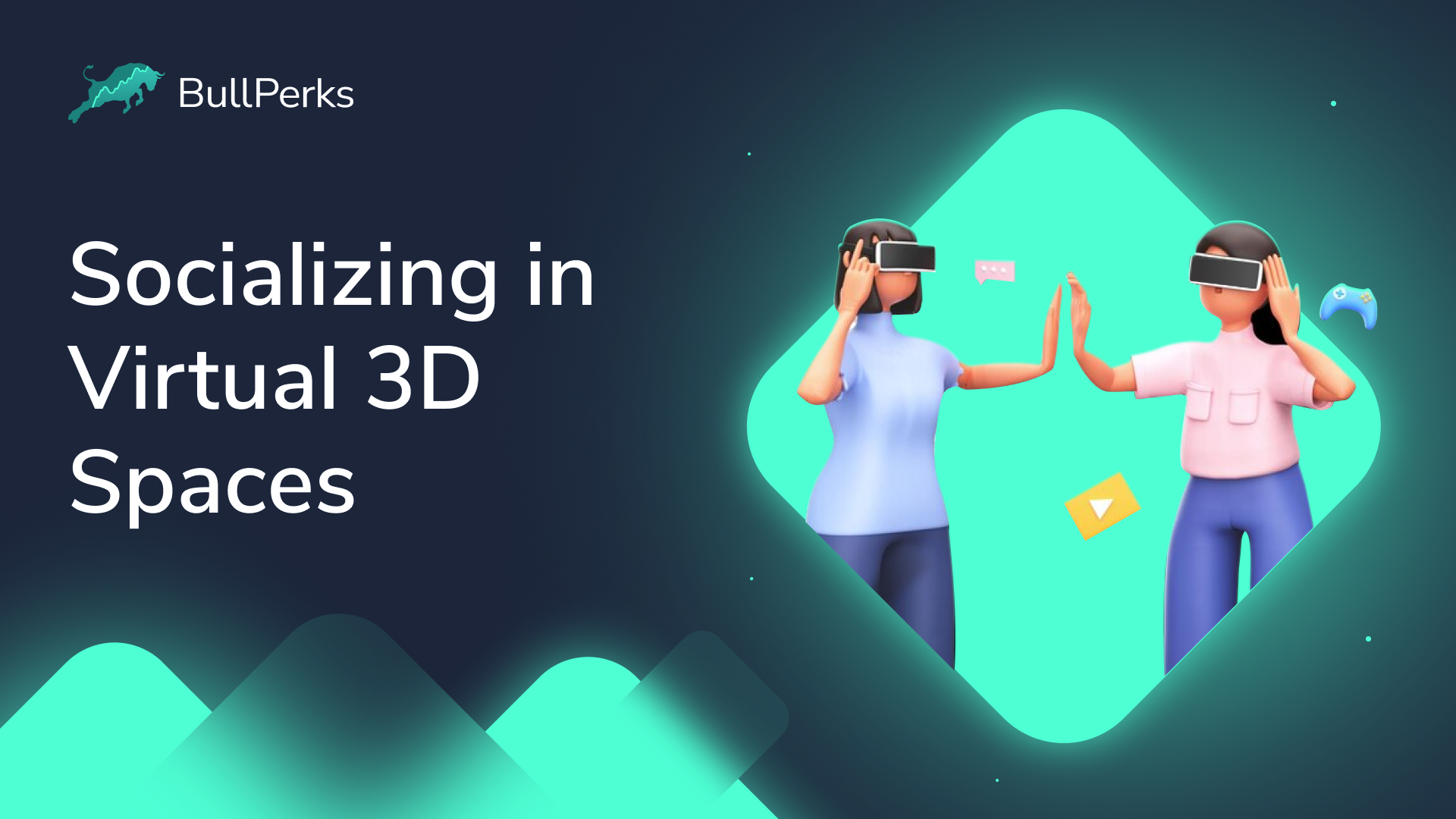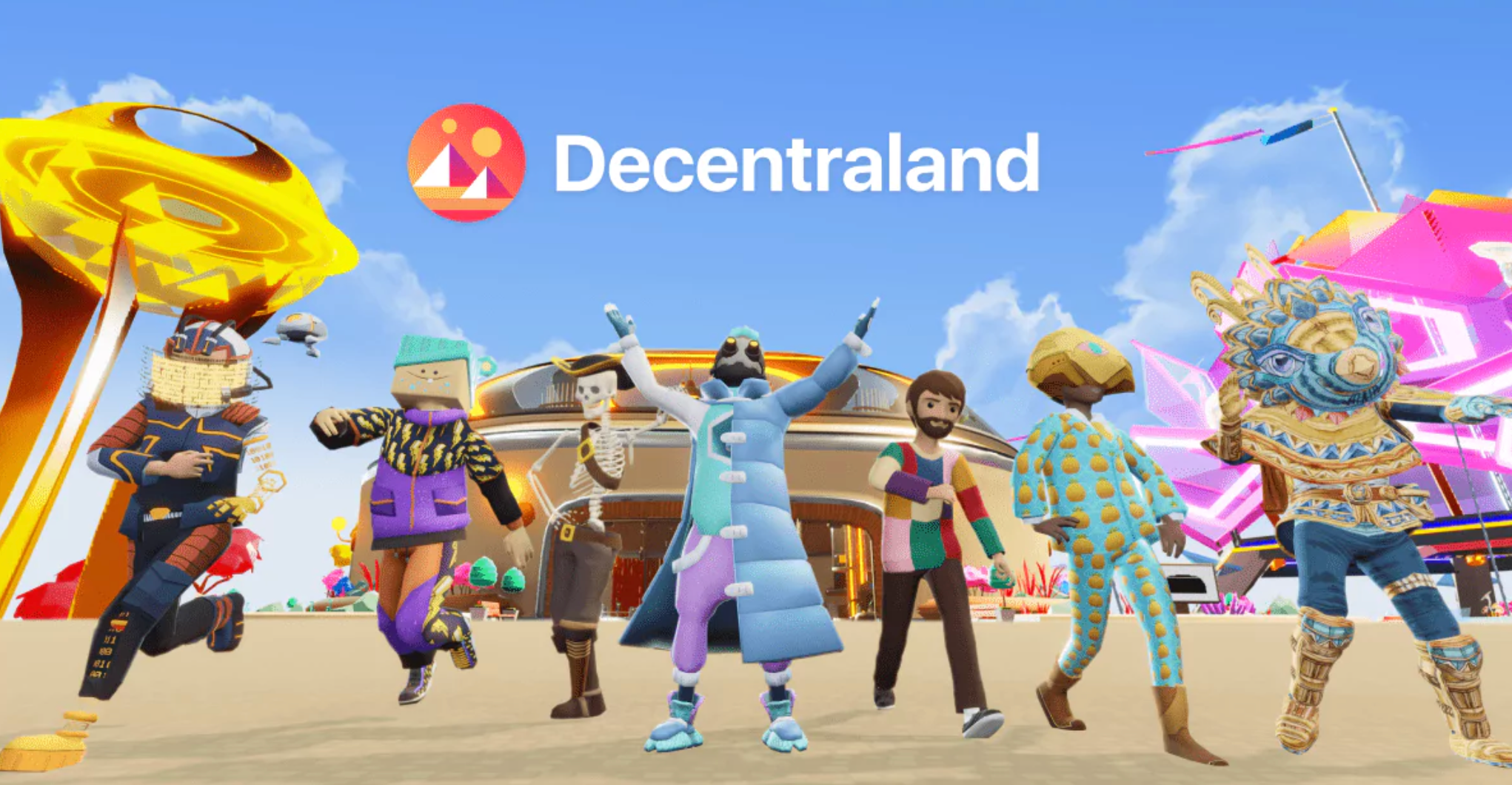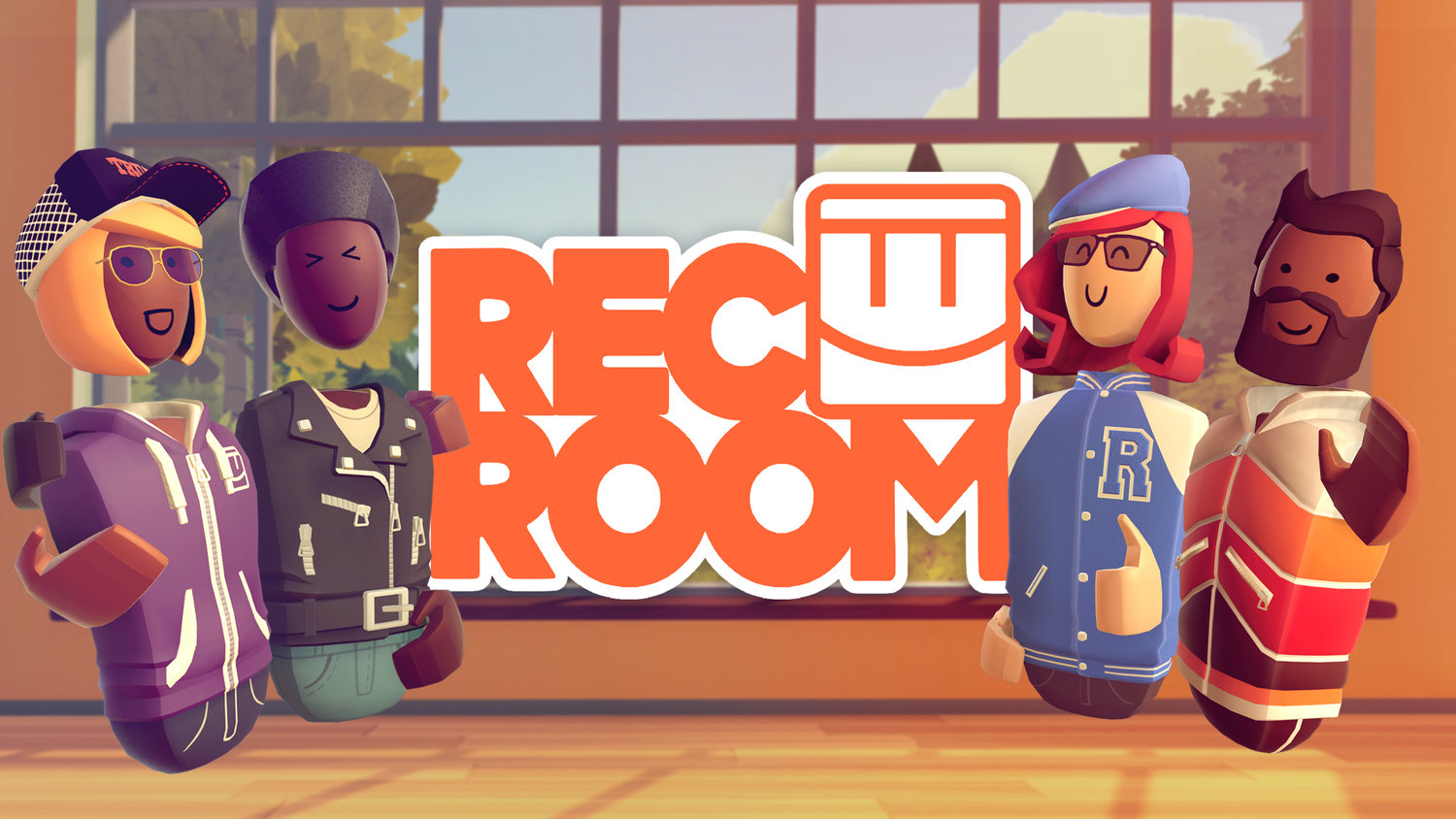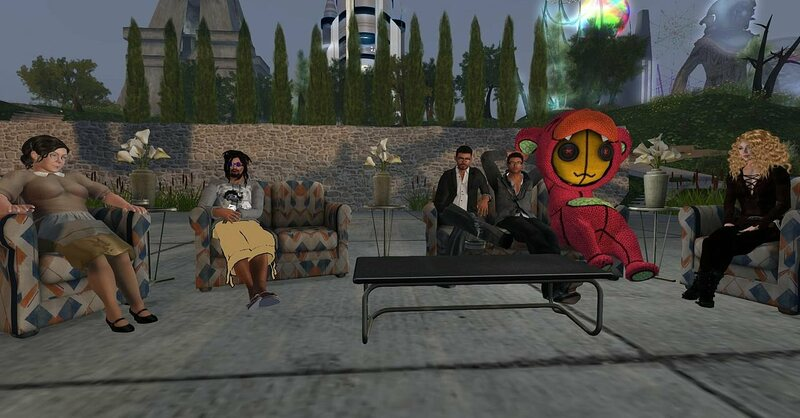
In the virtual world, there are endless possibilities for social presence, socializing, and engaging with others. From virtual reality (VR) platforms to 3D virtual spaces, people now have a variety of different ways to interact with one another in an immersive environment.
Socializing in virtual 3D spaces is a growing trend that has many benefits, including increased social presence, improved communication skills, and enhanced empathy. However, it also poses certain challenges, such as privacy concerns and potential addiction issues.
In this article, we will discuss what socializing in virtual 3D spaces entails, its advantages and drawbacks, how socializers interact virtually, and explore some popular platforms for socializing, such as Decentraland, Rec Room, and Second Life. Read on!
Definition of socializing in virtual 3D spaces
Socializing in virtual 3D spaces is an immersive experience that provides users with the ability to interact and engage with one another through virtual reality (VR) platforms.
It allows people to create virtual avatars, participate in virtual activities such as playing games, watching movies, or attending events, and socialize with other users worldwide.
Socializing in virtual 3D spaces offers a unique way of creating relationships while also providing an opportunity to learn more about oneself through self-exploration.
By engaging with others virtually, it can help foster empathy and improve communication skills which can be beneficial both professionally and personally.
Benefits of socializing in virtual 3D spaces
Socializing in virtual 3D spaces offers a range of benefits that can be enjoyed by both individuals and groups. One of the biggest advantages is that it allows people to socialize with others from any location, creating virtual relationships and friendships in a safe, secure, and immersive environment.
It also provides an opportunity for self-exploration, and personal growth as users can experiment with different virtual identities while exploring their virtual worlds.
Additionally, virtual socializing can help strengthen communication skills as users are forced to rely on communication through text chat instead of body language or facial expressions.
Furthermore, virtual socializing can provide an outlet for empathy and understanding as people learn about different cultures and backgrounds without having to leave their homes.
Finally, virtual 3D spaces are perfect for entrepreneurs as they offer unique opportunities for marketing campaigns and events.
Challenges of socializing in virtual 3D spaces
Socializing in virtual 3D spaces also poses certain challenges that must be taken into consideration. One of the major drawbacks is that virtual interactions can lack the physical presence and touch of real-life socialization, making it difficult to connect with others on an emotional level.
Additionally, virtual socializing can suffer from a lack of accountability, as users are free to have multiple virtual identities or say things they would not normally say in real life.
Furthermore, virtual 3D spaces tend to limit user interaction to the virtual world, meaning people cannot easily go offline after a virtual interaction.
Finally, virtual socializing raises privacy concerns due to potential data collection and usage in virtual worlds without users’ consent.
In addition to these issues, there is also a risk of addiction due to its immersive environment. With so many distractions and online activities, people may spend too much time in virtual worlds instead of engaging with the real world.
How Socializers Interact Virtually
Socializers interact virtually by utilizing virtual reality (VR) technology. This allows users to create virtual avatars, explore virtual worlds and engage in activities with other users from all over the world.
Through social VR, people can experience a sense of social presence as if they are actually together in person, even though they may be miles apart. Socializers can communicate through text chat or voice calls depending on their preference and connect with others on an emotional level despite the lack of physical contact.
Additionally, virtual 3D spaces offer unique opportunities for entrepreneurs to market products and services while also providing an outlet for self-exploration and personal growth.
Avatars and profiles
Socializing in virtual 3D spaces involves creating virtual avatars and profiles that represent users. These virtual identities allow socializers to express themselves while providing anonymity when engaging with others online.
Avatars are used to visually represent the user, allowing them to customize their appearance and create unique looks for their virtual worlds. Additionally, profiles provide information about the user, such as age, interests, hobbies, and more which can be shared with other socializers.
By utilizing avatars and profiles, socializers can interact with each other on a deeper level than they would if they were interacting in real life.
Chatting and voice/video calls
Chatting and voice/video calls are the main forms of virtual communication when socializing in virtual 3D spaces. Through text chat, socializers can type out their messages to one another, allowing them to connect and engage with each other despite physical distance.
Moreover, they also have the option to use voice or video calls when they want to interact with a more personalized approach. With video calls, users can engage with each other through facial expressions and body language, which can help enhance virtual connections.
Additionally, virtual 3D spaces offer an array of interactive activities such as virtual sports, virtual concerts, or virtual parties that socializers can join for fun and entertainment.
Furthermore, having conversations over voice/video is also an excellent way for people to practice their communication skills since these virtual interactions typically involve fewer distractions than real-life conversations.
Finally, chatting and voice/video calls also provide a sense of camaraderie since users can come together from different corners of the world and converse with each other in real-time about any topic imaginable - something impossible in the physical world.
Sharing digital experiences and activities
Sharing digital experiences and activities is one of the most popular ways to socialize in virtual 3D spaces. Through virtual reality (VR) technology, users can interact with each other by creating virtual avatars and exploring virtual worlds together.
By utilizing VR headsets and controllers, socializers can engage in various activities such as virtual sports, virtual concerts, or virtual parties, which offer a unique experience that cannot be found in real life.
Additionally, socializers can share their experiences with others by taking screenshots or recording videos, which allows them to look back on fun memories from their virtual adventures.
Furthermore, sharing digital experiences also helps people stay connected despite physical distance since they are able to communicate through text chat or voice/video calls while engaging in interactive activities online.
Forming relationships through gaming, education, or other activities
Forming relationships through virtual 3D spaces is a great way to build meaningful connections with people worldwide. With virtual reality (VR) technology and social presence, users can engage in various activities such as gaming, education, or other activities that promote socializing online.
Through these experiences, socializers are able to interact with each other and form relationships by sharing virtual worlds together.
Additionally, they can converse via text chat or voice/video calls while engaging in interactive activities, further strengthening their virtual connection.
Finally, forming relationships through gaming, education, or other activities helps break down physical barriers since it allows people to stay connected despite any geographical distance that may exist between them.
Popular Platforms for Socializing
Socializing in virtual 3D spaces has become increasingly popular with the emergence of virtual reality (VR) technology and social presence. There are many platforms available that allow users to connect and engage with each other through virtual avatars, virtual worlds, text chat or voice/video calls.
Popular platforms for socializing include Decentraland, Ready Player One, Rec Room, and Second Life. These virtual 3D spaces offer a unique experience where users can interact with each other by creating their own virtual avatars and exploring various activities such as virtual sports, virtual concerts, or virtual parties together.
Moreover, they can also share digital experiences by taking screenshots or recording videos, which allows them to look back on fun memories from their adventures online.
Finally, forming relationships through gaming, education, or other activities helps break down physical barriers since it allows people to stay connected despite any geographical distance that may exist between them.
Decentraland
Decentraland is an Ethereum-based virtual world where users can purchase plots of land with cryptocurrency (MANA) as non-fungible tokens (NFTs). These plots of land are then used as building blocks with which users can create their own 3D worlds. The idea is that users can build their own games, art pieces, stores, or whatever else they want within their virtual plot of land. The sky is literally the limit!

How Does It Work?
The first step for anyone exploring this new frontier is acquiring MANA tokens. These are used to purchase plots of land in the virtual world. Each plot of land has its own unique characteristics, such as size, location, and price.
Once purchased, a user will have full control over what they do with their plot of land—they can build anything they want or even just leave it empty if they choose to do so. They also have the option to resell or rent out their plots at any time.
Benefits Of Investing In Decentraland
The primary benefit of investing in Decentraland is that it is a relatively low-risk investment opportunity that offers many potential rewards. For instance, users who purchase land in this virtual world could potentially earn passive income through rental fees or by selling off parts of their plots later on down the line when values increase.
Additionally, there are many creative opportunities available for those who wish to take advantage of them—such as creating games or artwork that can be sold within their space—which could result in additional revenue streams for investors.
Finally, since the entire platform runs on blockchain technology and non-fungible tokens (NFTs), it offers greater transparency than traditional investments and offers investors more control over what happens with their money.
Rec Room
What sets Rec Room apart from other social apps?
It is focused on both gaming and crypto trading. The app provides gamers with a wide range of options for playing games together – from classic board games like chess and cards to more complex 3D game simulations.
And if you’re looking for a challenge, plenty of tournaments are also available. But what really makes Rec Room unique is its integration of cryptocurrency trading into the gaming experience.

Rec Room users can trade cryptocurrencies directly within the app by using their own virtual coins (called “rooms tokens”) or real-world currency (like USD). This means that gamers can use their winnings from playing games in Rec Room to buy and sell cryptocurrencies – making it easy for investors to diversify their portfolios without leaving the platform's comfort. Plus, since all transactions are recorded on a blockchain ledger, users are guaranteed maximum security when trading virtual currencies.
In addition to providing an immersive gaming experience with integrated cryptocurrency trading, Rec Room also offers unique opportunities for players to collaborate and create custom content within the game world.
Gamers can team up with friends from around the world to design virtual worlds and share them with others at no cost! With so much going on in this innovative social app, it’s no wonder more crypto traders are turning to Rec Room as their go-to platform for entertainment and investments.
Second Life
What Is Second Life?
At its core, Second Life is a digital world created by Linden Lab. Users sign up, create their own avatars, and then explore the environment. The world contains user-created content like buildings, landscapes, objects, scripts, textures, and animations. Plus, members can buy or sell digital items like clothes or furniture using Linden Dollars—the currency used on the platform—and they can also make real money from their virtual activities.

What Can Crypto Investors Do In Second Life?
Crypto investors can use Second Life as an avenue for their investments. There are many ways to make money on the platform, such as trading goods for profit or earning income through sales of virtual items such as clothing or furniture. Additionally, some investors have found success investing in land on the platform, buying up parcels of land at low prices and reselling them later for larger profits.
Another way to make money in Second Life is by offering services to other players, such as tutoring lessons or providing custom builds of homes or stores within the game environment. Since Bitcoin payments are accepted in-game, savvy crypto investors can use their knowledge of cryptocurrency to earn Linden Dollars while expanding their portfolio — all without ever leaving the comfort of their homes!
Bottomline
Socializing in virtual 3D spaces offers many benefits and challenges for users. Benefits include forming meaningful connections with people from all over the world, exploring virtual worlds together, and sharing digital experiences. Challenges include navigating virtual reality technology, maintaining a social presence while virtual, and staying safe in virtual environments.
Despite these challenges, socializers are able to engage with each other in innovative ways that can only be found in virtual 3D spaces, which makes this type of socializing a unique and worthwhile experience. Whether you're looking for new friends, virtual adventures, or just a place to hang out, virtual 3D spaces may be the perfect choice to make socializing fun and exciting.
However, suppose you want to become more tech-savvy. In that case, you should definitely do further research about virtual reality, any virtual world, physical reality, virtual space, virtual reality gameplay, mental health, VR users, social interaction, virtual space stations, social anxiety, how to play games, online games, physical space, virtual objects, user-generated content, social connection, augmented reality, virtual body, psychological aspects, and virtual body in virtual spaces, traditional media, and much more. Simple social networking, online socializing, and being present in social environment on a daily life basis might help a lot.
So why not give it a try today? You won't regret it!
Would you like to start investing in the most promising crypto projects? Learn how to invest with BullPerks, the fairest and most community-oriented decentralized VC and multichain launchpad!
Disclaimer. This material should not be construed as a basis for making investment decisions or as a recommendation to participate in investment transactions. Trading digital assets may involve significant risks and can result in the loss of invested capital. Therefore, you must ensure that you fully understand the risk involved, consider your level of experience, investment objectives, and seek independent financial advice if necessary.










